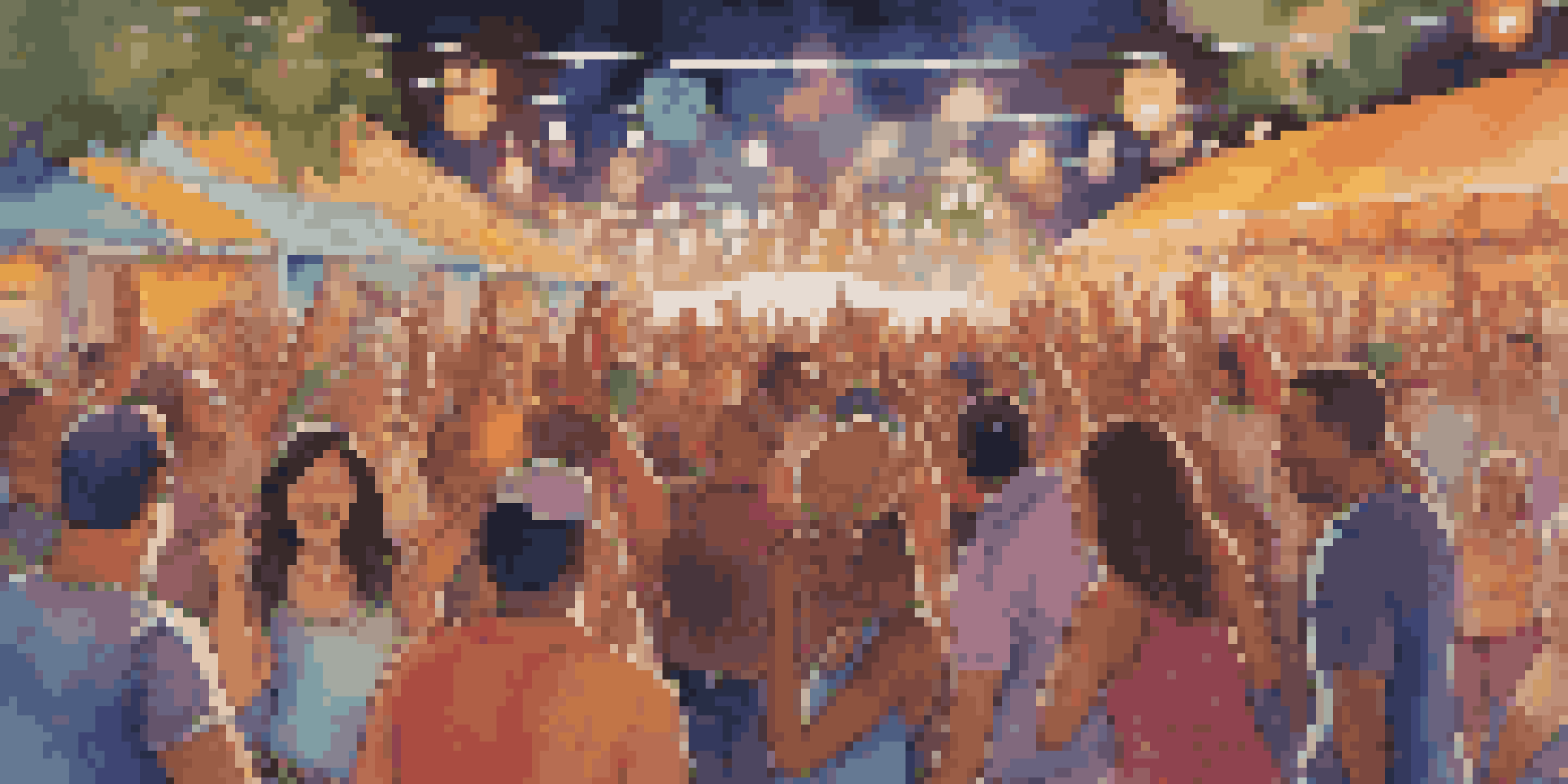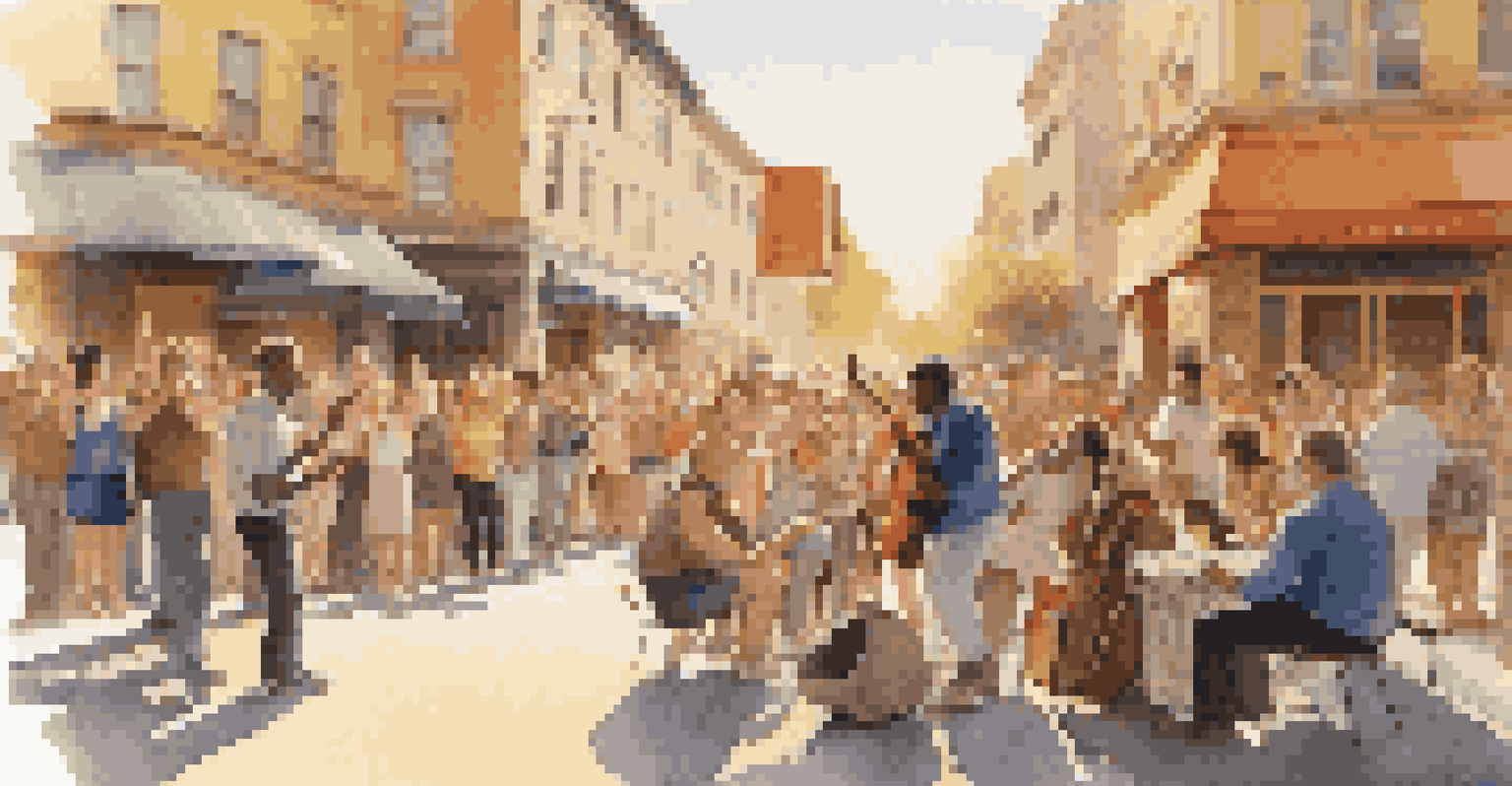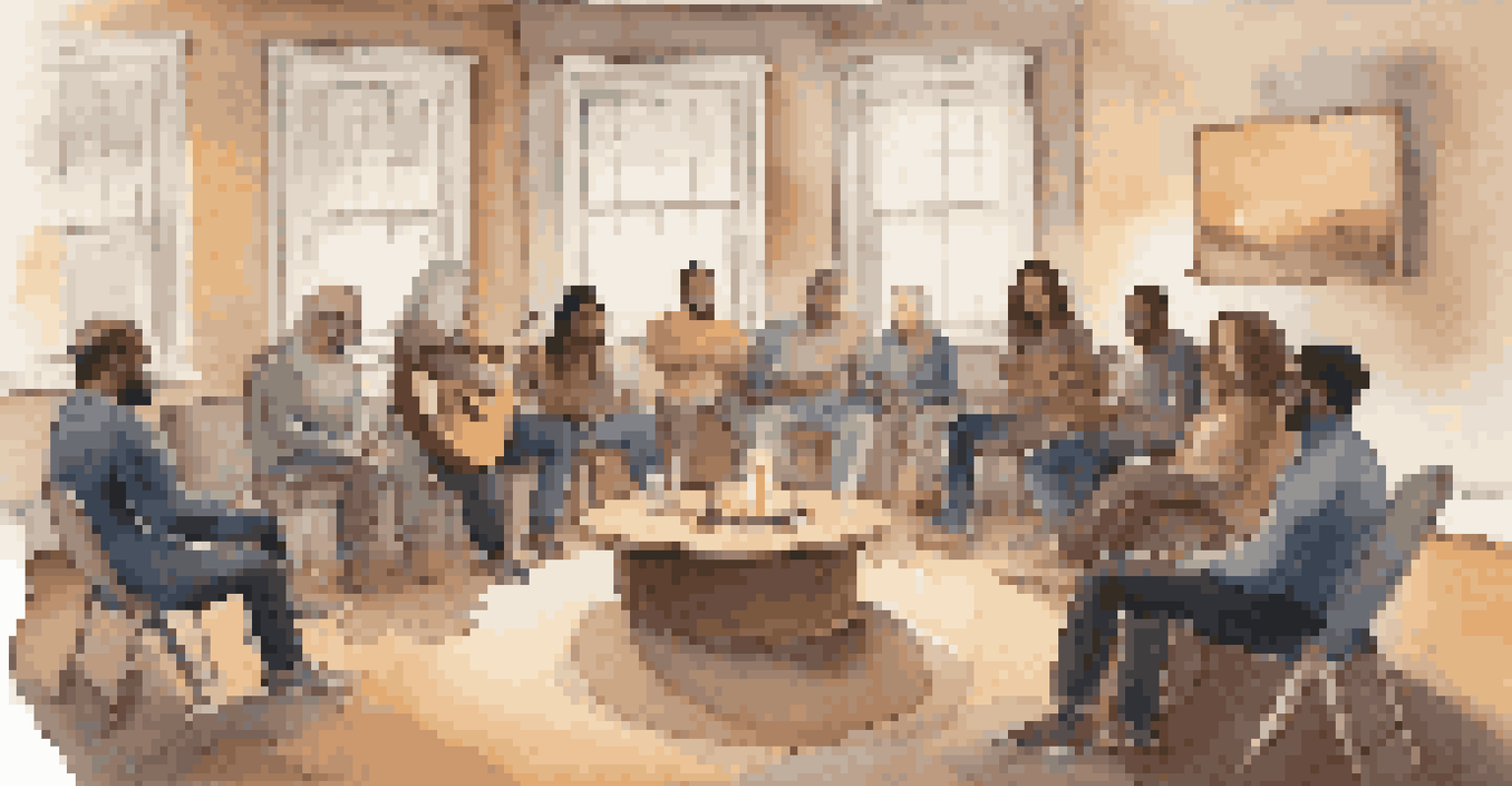How Music Fosters Nonverbal Communication Among Strangers

The Universal Language of Music and Its Power
Music is often called a universal language, and for good reason. It transcends barriers, allowing people from different cultures to connect on an emotional level. When strangers gather in a space filled with music, they experience a shared moment that can spark connections without a single word being exchanged.
Music is the shorthand of emotion.
Think about a festival where diverse groups come together; the rhythm and melody create a backdrop that encourages interaction. People may sway and dance together, even if they don’t speak the same language. This shared experience fosters a sense of belonging, breaking down walls of isolation.
Moreover, music can evoke feelings that words sometimes cannot capture. A powerful melody can make us feel joy, sadness, or nostalgia, allowing strangers to bond over similar emotional responses. This is where the magic of nonverbal communication truly shines.
The Role of Body Language in Musical Experiences
When music fills the air, body language becomes a vital form of communication among strangers. The way individuals respond to the beat—whether through a smile, a nod, or an enthusiastic dance move—can convey feelings of joy and connection. This nonverbal interaction often speaks louder than words.

For instance, at a concert, fans may not know one another, yet they jump, sway, or clap in unison. This collective movement creates a bond, as everyone feels part of something larger. Without a need for verbal introductions, they share a mutual appreciation for the music, fostering a unique camaraderie.
Music Connects Across Cultures
Music serves as a universal language that transcends cultural barriers, allowing people to bond emotionally without words.
Additionally, eye contact can significantly enhance this nonverbal dialogue. A shared glance during a particularly moving part of a song can communicate understanding and empathy, further deepening the connection between strangers.
Cultural Expressions Through Music and Movement
Different cultures express emotions and stories through their unique musical styles, which can be fascinating for strangers to experience together. When people from various backgrounds come together to enjoy music, they often engage in cultural exchange without needing to articulate it.
Where words fail, music speaks.
Take, for example, a group dance lesson featuring traditional folk music. Participants may not speak the same language, but as they learn the steps together, they share smiles and laughter. Through this movement, they experience each other's cultural heritage, fostering mutual respect and appreciation.
This rich tapestry of cultural expression illustrates how music serves as a bridge, allowing strangers to connect through shared rhythms and steps. In these moments, differences fade as individuals find commonality in their joyful exploration of music.
Improvisation and Spontaneous Connection
Improvisation in music can create spontaneous moments of connection among strangers. When musicians jam together, they engage in a form of dialogue that relies on instinct and creativity rather than words. This improvisational spirit invites listeners to join in, even if it’s just through clapping or swaying.
Imagine a street performer inviting passersby to sing along or play an instrument. In that moment, strangers become collaborators, united by their shared experience of creating something beautiful together. This kind of interaction showcases the power of nonverbal communication in forming connections.
Body Language Enhances Connection
Nonverbal cues like body language and eye contact play a crucial role in fostering connections among strangers during musical experiences.
Such spontaneous moments highlight how music can break down social barriers. They create opportunities for individuals to come together, fostering relationships that might not have occurred in a more structured environment.
Music as a Tool for Emotional Healing and Connection
Music has a profound ability to heal emotional wounds, making it a powerful tool for connection among strangers. When people gather to listen to music that resonates with their experiences, they often find solace in each other's presence. This shared understanding can be incredibly comforting.
Consider support groups that incorporate music into their sessions. Participants may share their stories through song or simply listen together, creating an unspoken bond. This collective experience fosters empathy, as individuals recognize they are not alone in their struggles.
In this way, music becomes a means of nonverbal communication that transcends individual experiences, allowing strangers to connect through shared emotions and healing journeys.
The Impact of Music Festivals on Social Interactions
Music festivals are a perfect example of how music fosters connections among strangers. These events bring together individuals from various backgrounds, all drawn by a shared love for the artists performing. In such an environment, the atmosphere is charged with excitement and openness, making it easier to strike up conversations.
As festival-goers dance, sing, and enjoy the music, they often find common ground with those around them. A simple compliment about someone's outfit or a shared favorite song can lead to lasting friendships. The nonverbal cues, such as laughter and dancing, create a friendly environment that encourages social interaction.
Festivals Forge Lasting Friendships
Music festivals create an open environment where shared enjoyment leads to spontaneous interactions and lasting friendships among attendees.
Ultimately, music festivals exemplify how a shared passion can turn strangers into friends. The joy and excitement experienced collectively can lead to meaningful connections that last well beyond the event.
Conclusion: The Lasting Impact of Musical Connections
In conclusion, music serves as a powerful vehicle for nonverbal communication among strangers. It breaks down barriers, allowing individuals to connect through shared experiences, emotions, and cultural expressions. Whether through dancing, body language, or spontaneous collaboration, the connections formed through music can be profound.
The beauty of these interactions is that they often occur without the need for words. The laughter, smiles, and shared moments create a bond that transcends language and cultural differences. In a world that can often feel divided, music offers a reminder of our shared humanity.

As we continue to explore the ways music enhances our lives, let’s embrace the connections it fosters, celebrating the moments of joy and understanding we create with strangers through this universal language.